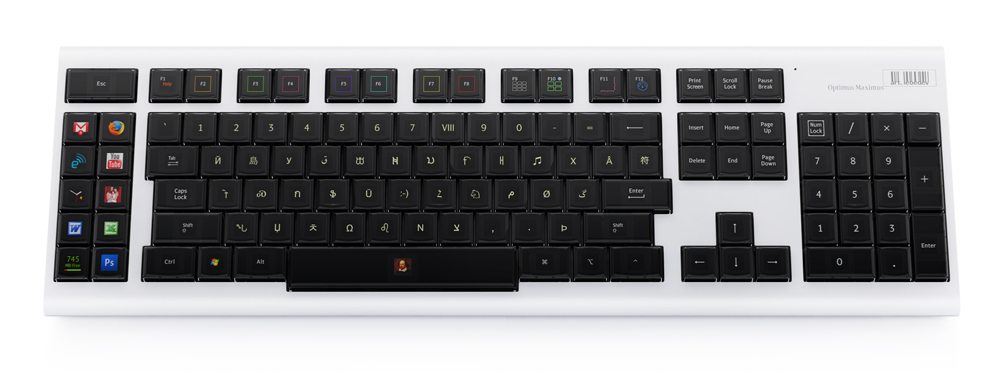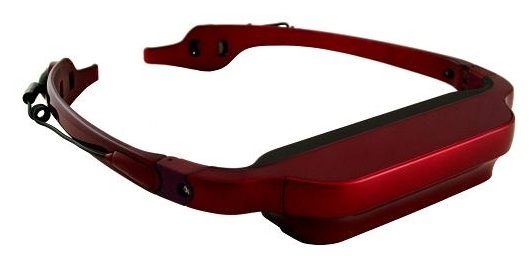CES 2008 Day 1: Keyboards, Power, Eyewear, and More
You know you’re a geek when one of the best parts of your day in Las Vegas is seeing a new hot new keyboard.
Art Lebedev is showing the real, non-vaporware, made-of-actual-atoms Optimus Maximus keyboard, on which each key houses a tiny OLED display. When you switch your layout from QWERTY to Dvorak, all the keycaps change with it. Perhaps more usefully, special function keys and the standard Fkeys can display application icons to remind you what they’re all going to do.
At $460 a pop, the Optimus Maximus is a splurge for most people, but I can see how it would be useful for public computers that are used by an international group – I’ve been to dozens of conferences where the participants had to mentally remap a physical keyboard to their home country’s layout. I suspect it’s also just a matter of time before some lifehack Web site comes up with a method to make this a fantastic productivity tool; just think of what you could do with AppleScript, macros, and a keyboard that dynamically changes functions and shows you how it’s changing to automate your workflow into one or two keystrokes.
There are some fascinating power accessories here at CES. Powercast is demoing various methods of transmitting power without wires, which would be great for charging cell phones and laptops without plugs. Aqua PowerSystem is looking for American distributors for their batteries that run on water. Any kind of water: “It will work with alcoholic drink, beer, cola, coffee, and even saliva or urine in an emergency situation without water.” Apparently fuel cells are also being demonstrated elsewhere on the show floor; finding them is on my to-do list.
The winner for Best Geordi LaForge iPod accessory is i-Vue’s video eyewear. A decent display and built-in headphones make this a killer toy for watching movies on a plane, but text starts to break down at greater than 800 by 600 resolutions, so it won’t do much for portable productivity.
It’s cool, but is it useful? SanDisk’s Cruzer Titanium Plus is a USB flash drive with 4 GB of memory, with a twist. The gimmick is that everything you put on the drive is also uploaded simultaneously to online storage. (Through your computer; the drive itself doesn’t go online.) It’s good to have a redundancy plan, but I can’t think of a use where I’d need to have a file in three places, one of them being on my person – if I’m physically carrying a file, that’s because I’ve decided I won’t have online access to it. The drive costs $60, and the online storage costs $30 per year after six months for free. (I have to say, when you’re
carrying around about 20 GB in free flash storage from exhibitors, it lowers your opinion of the market value.)
Another neat idea – I think – comes from PhoneCasting, which lets you record a podcast or audio blog entry by phone, simplifying what can be a tricky process. PhoneCasting also assigns a phone number to every podcast it records, enabling your listeners (all 3.25 billion worldwide cell phone subscribers, according to PhoneCasting’s rather breathless press release, which you can hear at 702-553-2764) to call up and hear your latest podcast over the phone. There are SMS messages to alert people to the existence of a podcast show, and PhoneCasting can insert radio-style ads into your podcast so you can generate revenue as well. How many
people want to listen to podcasts via long and likely expensive phone calls? I can’t criticize too much, having accidentally left my iPod nano at home, but it seems questionable. Podcasters receive 250 MB of storage for free and presumably pay for extra; the cost, if any, to those making the calls is oddly not mentioned in my press kit or on the home page.

